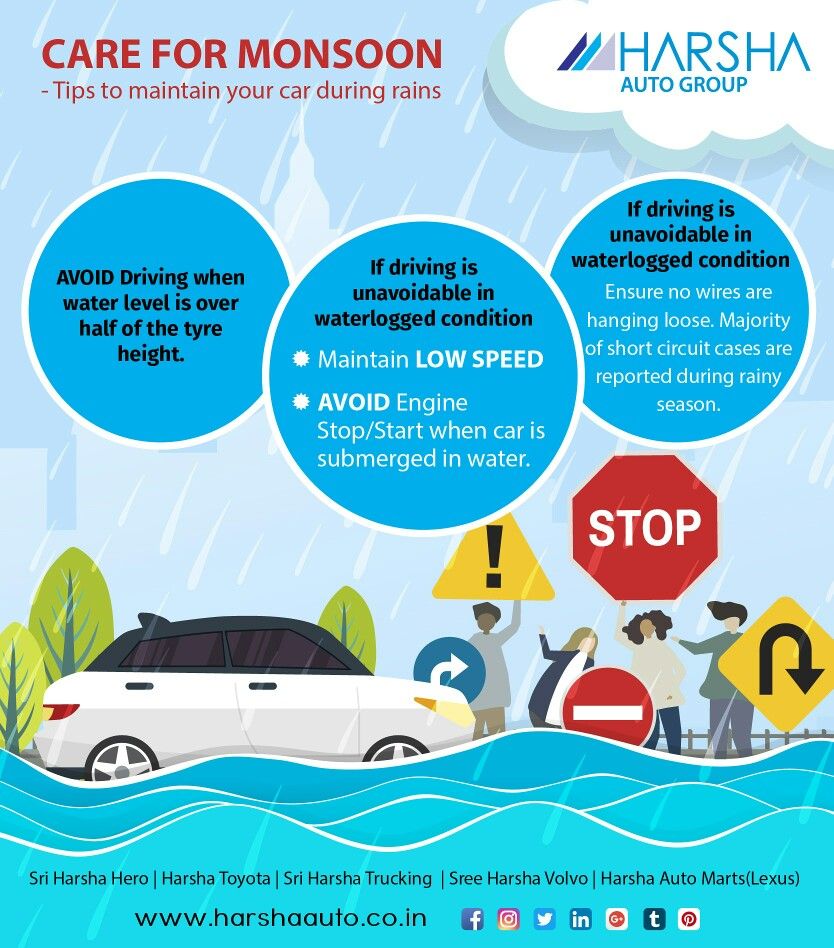As the monsoon season descends upon us, it brings forth the necessity of ensuring our cars are equipped to brave the heavy rains. In India, this season witnesses a surge in road accidents, making it imperative to adopt preventive measures for safe driving. Let’s explore five crucial tips to keep in mind during this monsoon for a hassle-free drive.
1. Tire Care for Safety Assurance
Tires stand as a critical safety element for vehicles, especially during monsoons. Adequate tread on tires is essential to effectively disperse water away from the contact patch with the road surface. This significantly reduces the risk of aquaplaning, consequently decreasing the braking distance on excessively wet roads. Regularly inspect the tire tread using a Treadway indicator situated within the grooves. Worn-out indicators signal the need for tire replacement, ensuring optimal safety on the road.
2. Brake Efficiency Matters
Undoubtedly, brakes constitute a pivotal aspect of vehicular safety. Wet surfaces during monsoons adversely impact braking efficiency, demanding a thorough check of brake functionality. Assess brake pads for wear and ensure the master cylinder operates optimally. A simple test involving the car ignition, brake pedal, and observing pedal travel distance helps determine brake health. Any unusual distance or a spongy feel warrants immediate servicing or replacement to enhance safety, especially before encountering heavy rainfall or traversing waterlogged areas.
3. Wiper Maintenance for Clear Vision
The functionality of wiper blades holds immense significance in maintaining clear visibility during rains. Worn-out blades compromise the effectiveness of clearing rainwater from the windshield. Prioritize inspecting and replacing damaged wiper blades before the onset of heavy rains to avoid hazardous situations during intensified rainfall.
4. Battery and Electrical Checks
Monsoons amplify the usage of car electronics like headlights, fog lamps, and wipers, putting a heavier load on the battery and electrical wiring. Ensure the battery and wiring remain in top-notch condition, safeguarding against damage caused by heavy rains. Additionally, carry spare fuses, basic tools, a first aid kit, a jack, and a high-visibility triangle to tackle emergencies effectively.
5. Navigating Flooded Streets
In scenarios requiring traversal of waterlogged streets, maintain a consistent throttle to navigate through. Avoid lifting your foot off the throttle, preventing water entry into the exhaust system and potential damage to the car. Keep engine revs high, stick to lower gears, and only release the throttle once out of the waterlogged area. Should your vehicle stall, refrain from restarting the engine to avoid further damage. Instead, attempt to push the car to a dry area for towing.




